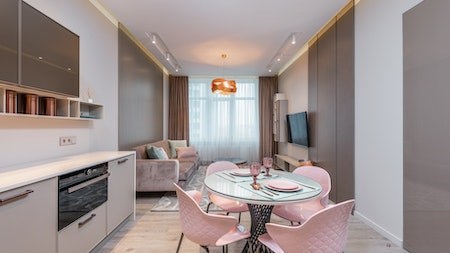For the third quarter of 2021, the PayProp Rental Index showed that rental growth was minimal year on year, measuring 0.1% in July, 0.3% in August, and 0.2% in September.
The index is a quarterly guide that outlines trends in the South African residential rental market. The quarterly guide is compiled from transactional data collected by PayProp, a South African residential rental transaction processor.
Subdued rental growth continued into the third quarter of 2021 amid high inflation levels, primarily driven by increasing transport costs in the absence of real economic growth.
Johette Smuts, head of data analytics at PayProp, says tenant affordability continues to put downward pressure on rental prices.
“Unemployment is at an all-time high in South Africa, framed by an economy that is slow to improve. Moreover, tenants continue to feel the pinch of the Covid-19 pandemic, especially in the light of the predicted fourth wave.”
Provincial outlook
The index showed that Mpumalanga was the only province to experience positive year on year rental growth in all four past quarters. Mpumalanga also experienced the fastest rental growth of any province in the third quarter, with average rents increasing by 3.5% - up R257 from R7 442 to R7 699. Rent in this province is R101 cheaper than the national average of R7 800.
The Western Cape had the second-highest rental growth, at 2.5% year on year over the third quarter. A year ago, the average rent increased from R9 041 to R9 266 in this quarter. Before the 1.8% increase in the second quarter of 2021, the Western Cape had experienced four consecutive quarters of negative rental growth. However, this province is still the most expensive place to rent.
Second, under the title of worst performing out of all provinces, is Gauteng. Recording its second consecutive quarter of negative rental growth with a decrease of 2.3%. In the second quarter, rent decreased by 0.6% year on year, after two quarters in which rent increased by 0.7% each time. The average rent in the third quarter was down to R8 235 from R8 432 the previous year.
In KwaZulu-Natal rental growth bounced back in the second and third quarters of 2021, after two quarters of declining rent. The average rent increased 1.3% year on year in the third quarter to R8 232 - up from R8 123 in 2020. If the rebound continues, KwaZulu-Natal could overtake Gauteng to have the second-highest rentals in South Africa in the first quarter of 2022.
Improving arrears
According to PayProp Index data, the percentage of residential rental tenants in arrears has declined steadily since it peaked in the third quarter of 2020. In fact, in the most recent quarter, arrears had decreased to 19.1%. Lower than pre-lockdown figures.
Smuts says the average size of individual arrears has also reduced each quarter since its peak in 2020.
“In the first quarter of 2020, tenants in arrears owed 78.5% of one month's rent on average. That increased to 96.3% in the second quarter, the first quarter in lockdown. Then increased even further to 104.6% in the third quarter of 2020. To decrease this metric, tenants in arrears have had to pay their total rent plus an additional amount towards their debt each month. This is not an easy feat in the current economic climate.
“In the third quarter of 2021, tenants in arrears owed 82.3% of one month's rent on average. This is still slightly above the 78.5% seen before the pandemic. However, the improvement in this metric over the past year is very encouraging.”
Smuts says that although the outlook remains less positive than in previous years, only two of the nine provinces experienced a decrease in average rent levels in the third quarter of 2021. In comparison, four provinces experienced decreasing average rentals a year ago and five in the last quarter of 2020.
The PayProp Rental Index provides excellent insights into the South African residential rental market trends. You can download the PayProp Rental Index here.





